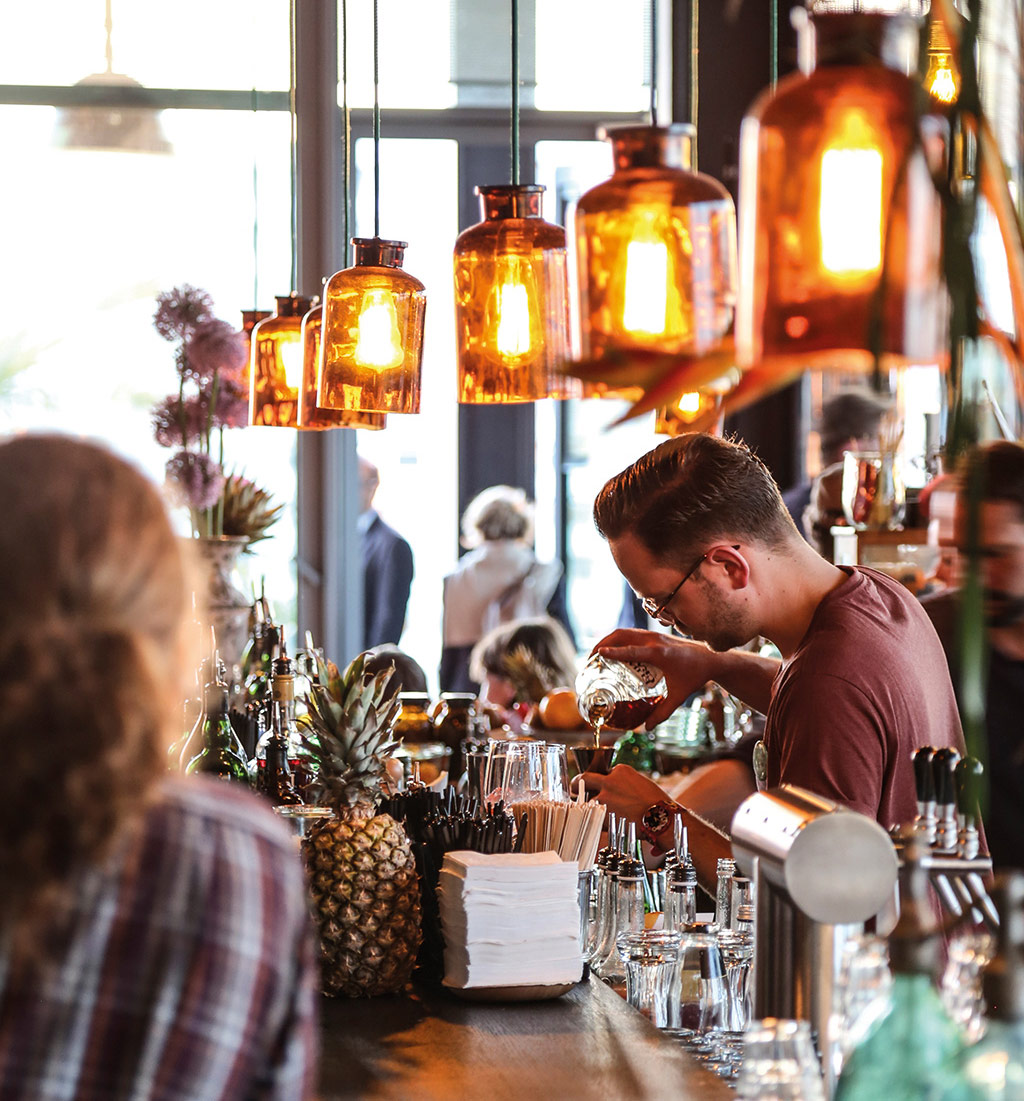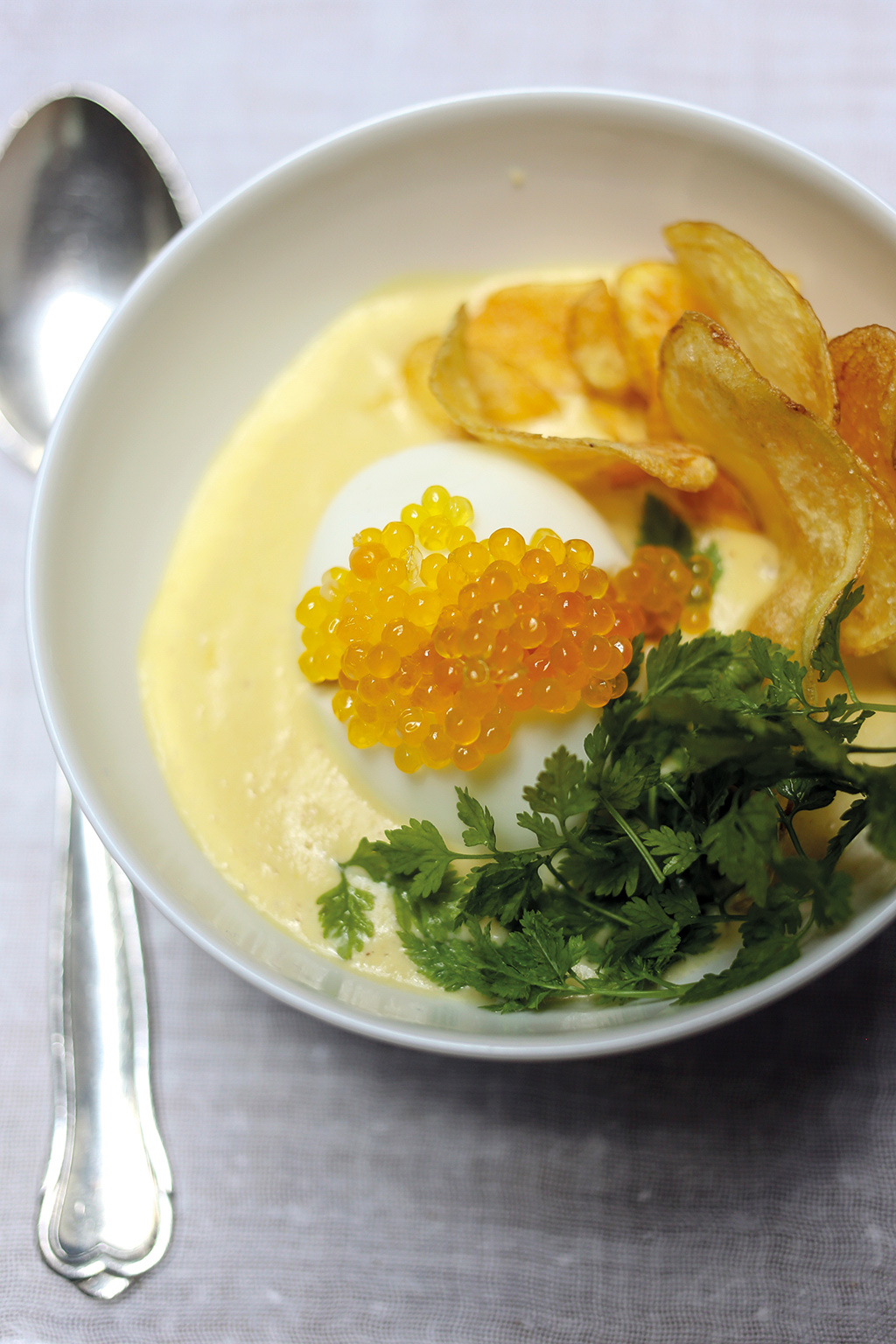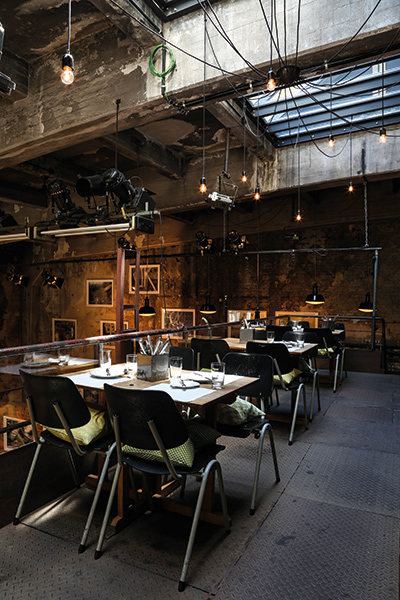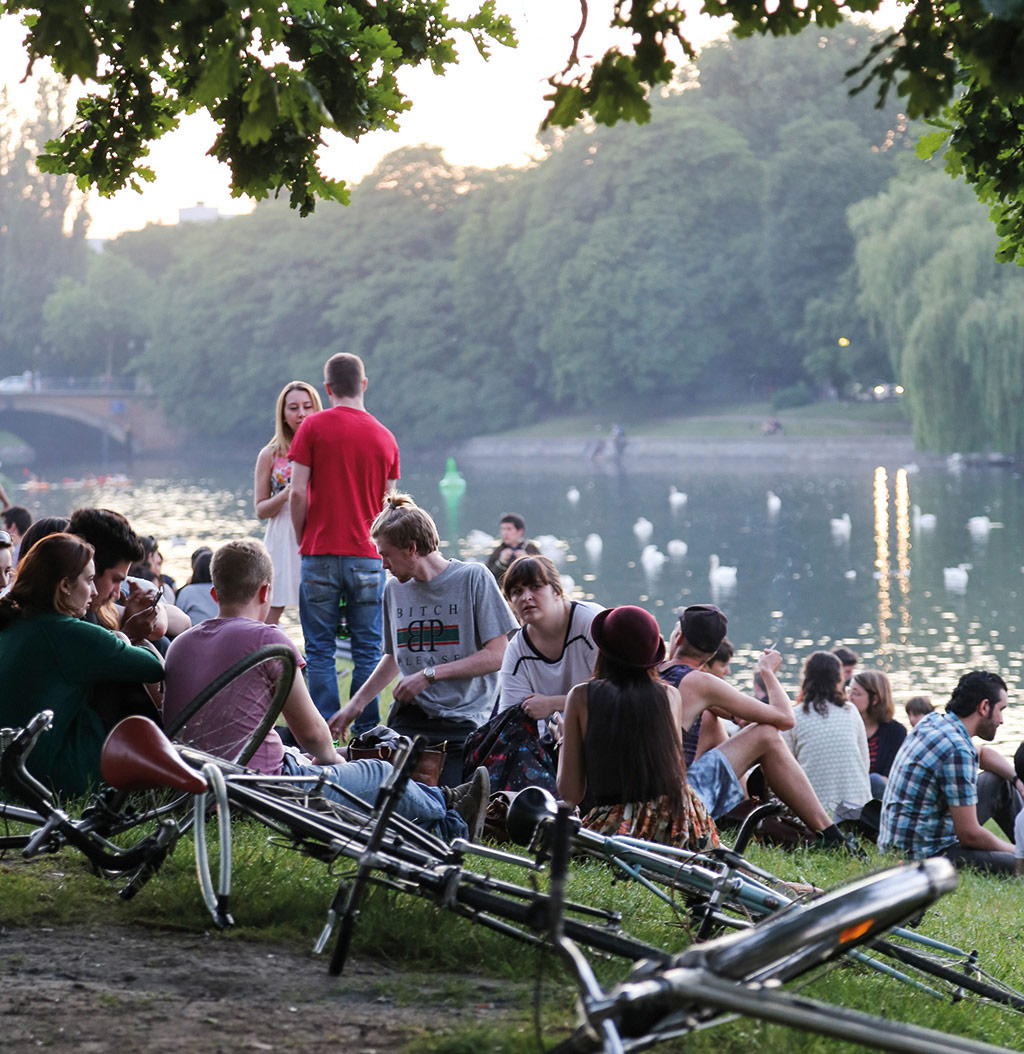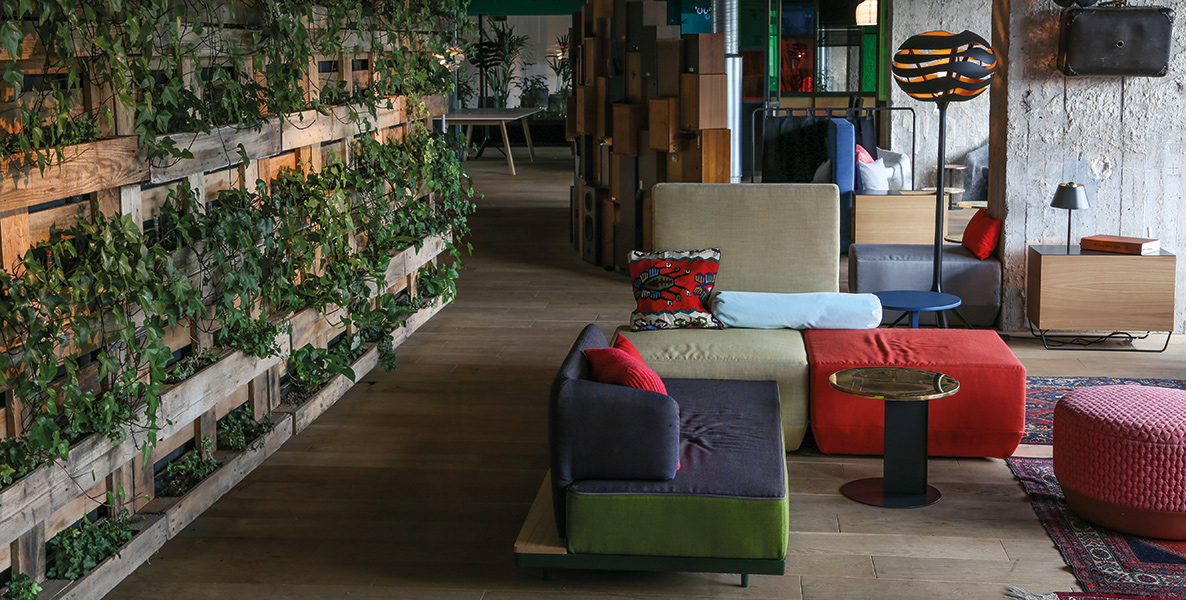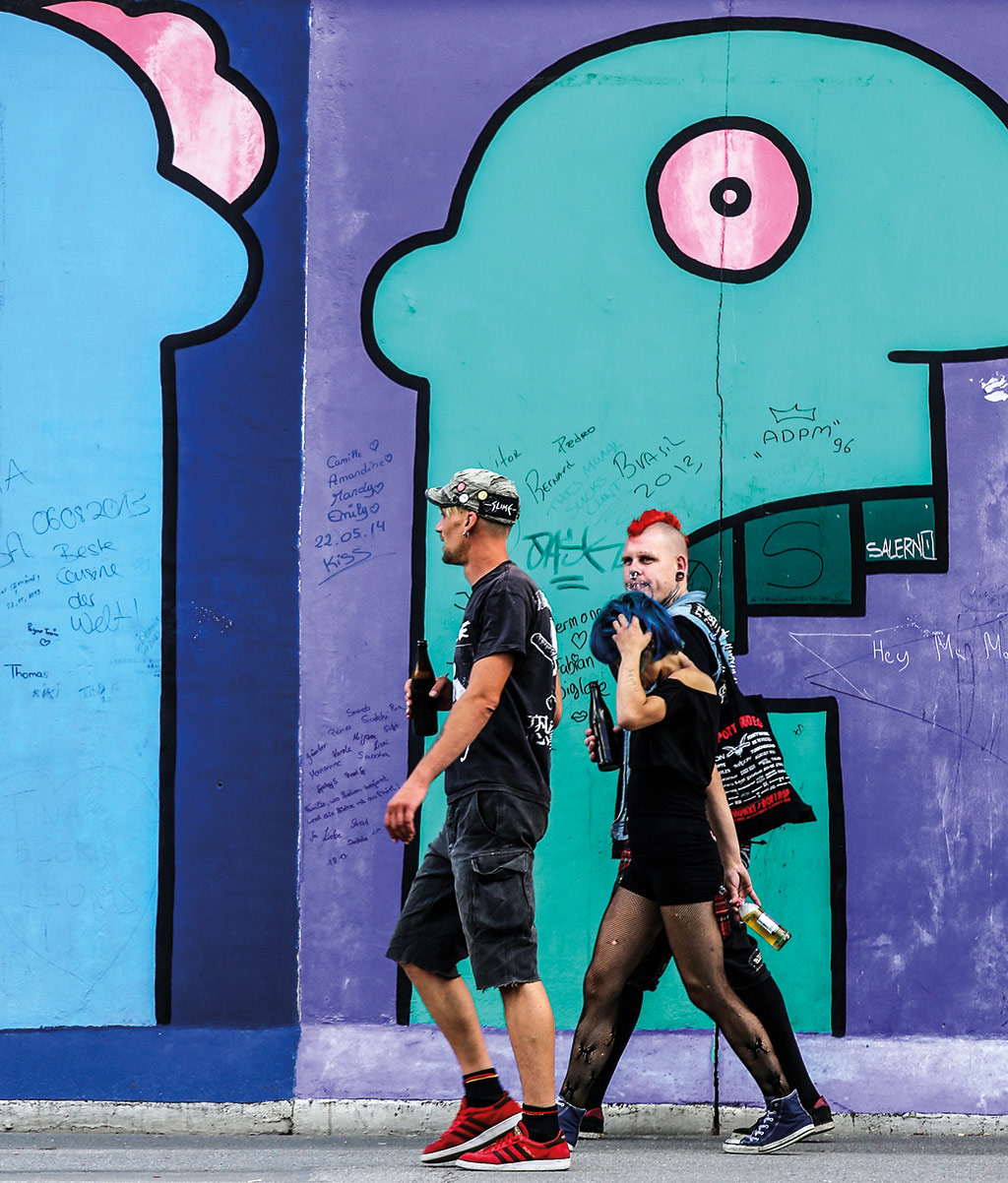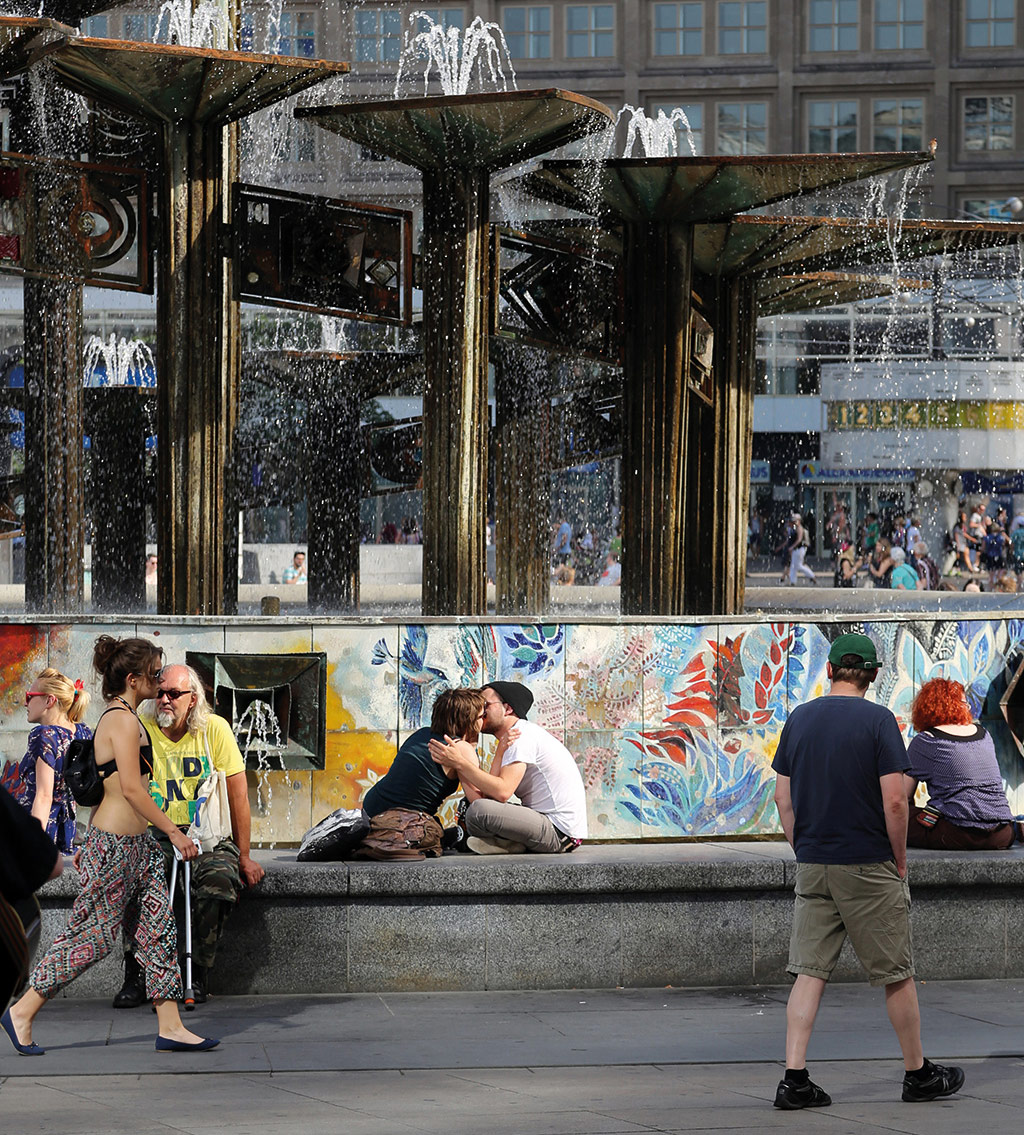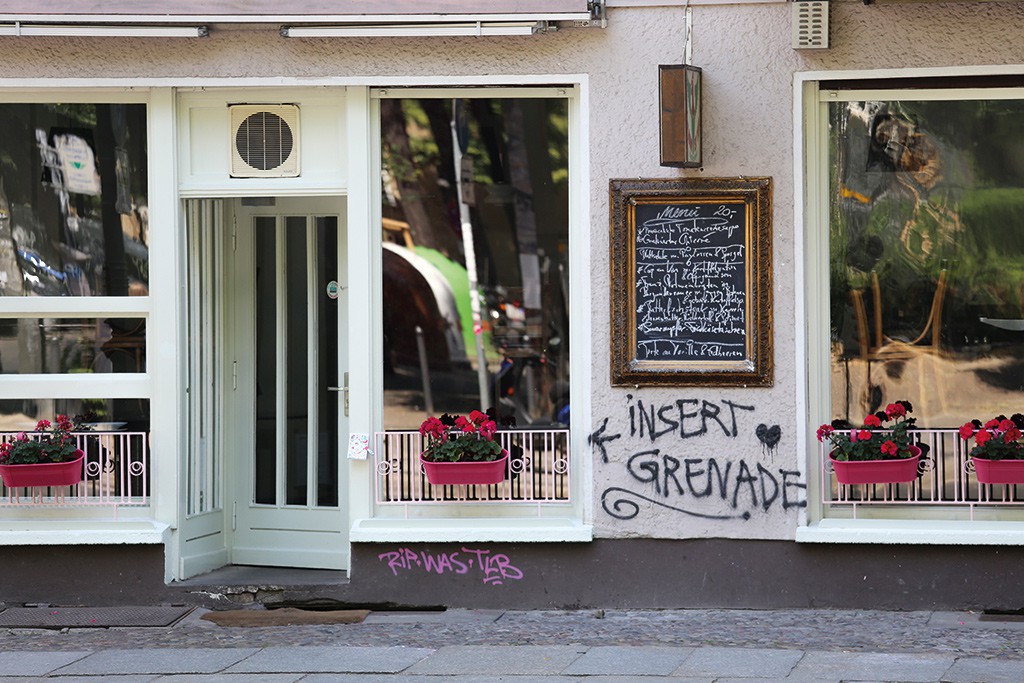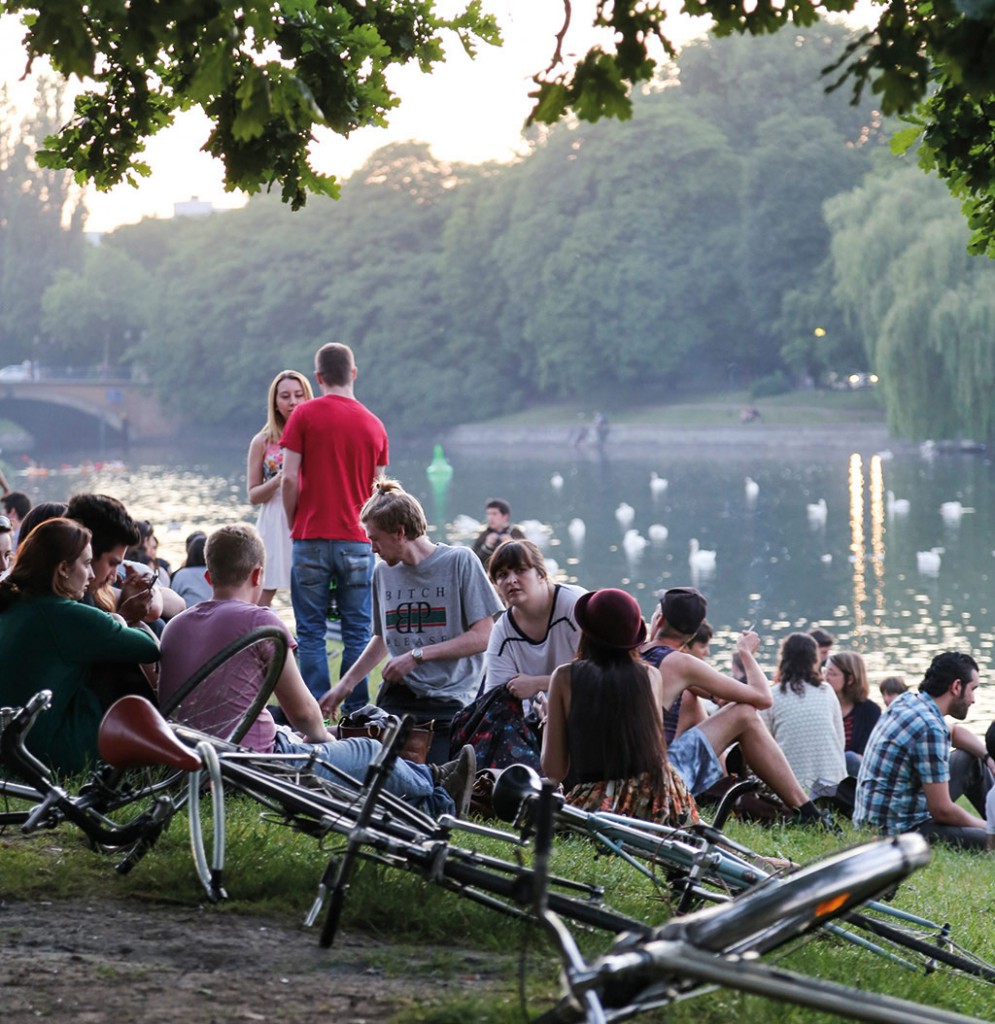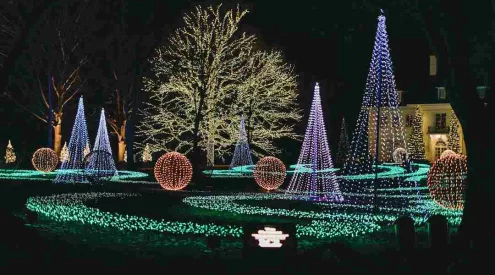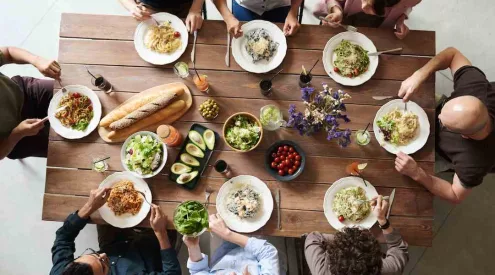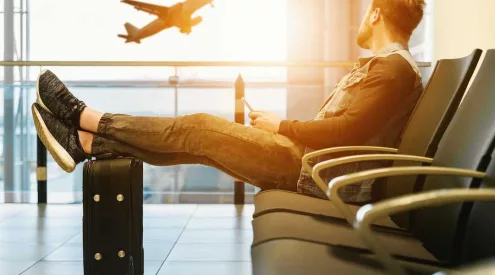Twenty-five (and a half) years ago the Berlin Wall fell. Twenty years ago, South Africa’s apartheid system finally crumbled. Seven years ago Nikki Werner first travelled to the German capital, but on her latest trip, she noticed something very different. Photographs by Brandon de Kock.

After the Berlin Wall fell, the East Side Gallery was painted by 118 artists from 21 countries as a commentary on events between 1989 and 1990.
There’s a German phrase that goes Ich habe [insert person or place name] ins Herz geschlossen, meaning you’ve locked someone or some place in your heart. That’s what happened to me the first time I went to Berlin. I could move there in a heartbeat.
Is it the Parisian charm of her wide boulevards and pre-war Altbau apartments, or the prices more affordable than other European capitals and even some other German cities? Is it the culture combined with lush parks or the high quality of life thanks to her 3.5 million inhabitants being so spread out? That’s all part of it, but something deeper keeps drawing me back. In the same way London is not England and New York City is not America, Berlin is not Germany. It’s a capital under reconstruction, a work in progress, which brings with it a raw edge many South Africans will relate to: that Wild West feeling we miss when visiting highly regulated countries such as Australia.
But there’s something else. When I landed in Berlin in 2007, the city, like South Africa, seemed uncomfortable about its past. We had apartheid; it had the wall. Our unification was one of race and culture, hers of two ideologies pitted against each other: communism versus capitalism, not to mention the baggage of the Third Reich. As South Africans, we’ve been there: we’ve seen the demise of a destructive regime, dealt with the fall-out and the awkward process of finding a new identity.
We understand divided places and what it takes to come together. Two decades down the line, we also rediscovered our national pride through hosting a soccer World Cup. On revisiting Berlin this year, I sensed a shift. There was a self-acceptance I hadn’t felt before, and dare I say it a pride in what the city has to offer. As a food journalist, my point of entry is always culinary, so that’s where I noticed it first, but it wasn’t long before I saw it in other places too. Although I’ve been back in between, my visit in 2014 was seven years after I first touched down at Tegel airport. This was my experience, then and now.
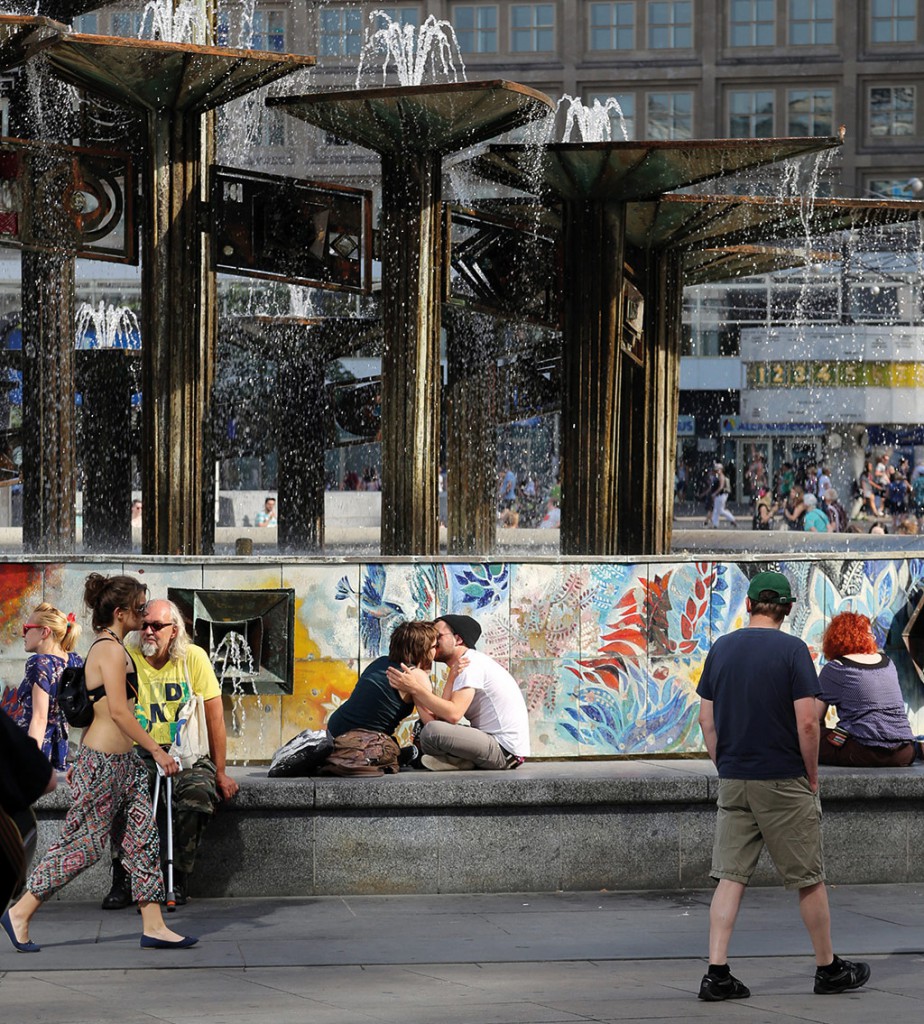
The public square of Alexanderplatz is the tourist and transport hub of Mitte and home to the city’s iconic Fernsehturm (the tower). A never-ending parade of colourful locals and global visitors makes it one of the best people-watching spots in all of Europe.
Twisting tastes
Then, my most authentic meal (if you can call it that) was currywurst at Konnopke’s. This time, another angle had crept into the dining landscape: proudly Berlin. Berlin’s bad-boy-made-good, chef Tim Raue, whose Michelin stars glitter at his eponymous Restaurant Tim Raue, is now serving traditional Berlin Eckkneipe (corner pub) fare and Konditorei (pastry café) classics from his latest kitchen La Soupe Populaire.
In a tourist-clogged part of Mitte, I found truth (about what German food can be) and reconciliation. At Pauly Saal, a Bavarian chef called Michael Höpfl is re-imagining German classics informed by seasonal ingredients. The restaurant is housed in a former Jewish girls’ school, which was officially returned to the Jewish community in 2009.
Equally surprising was finding chraime, a highpoint in Ashkenazi Jewish cooking (which I last enjoyed at a Shabbat dinner), on the menu at restaurant NENI atop my hotel, the 25Hours Bikini. Israeli shared-table eating in Berlin? Who knew!
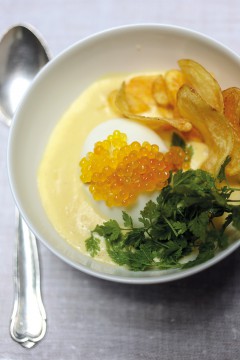
Tim Raue’s mustard egg is a soft-boiled egg in mustard sauce reloaded with caviar and potato crisps.
East versus West
The Bikini hotel also illustrated the bridging of a more recent divide: the young, hip East and the established, staid West. After the wall fell, the East was invigorated by underground parties and an experimental art scene, made possible by abandoned buildings and cheap rent. In 2007, I checked into Mitte in the former East, but this time I chose Charlottenburg, in the former West. I stayed at the Bikini, which opened in April 2014. By May, the hotel’s Monkey Bar was the place to be.
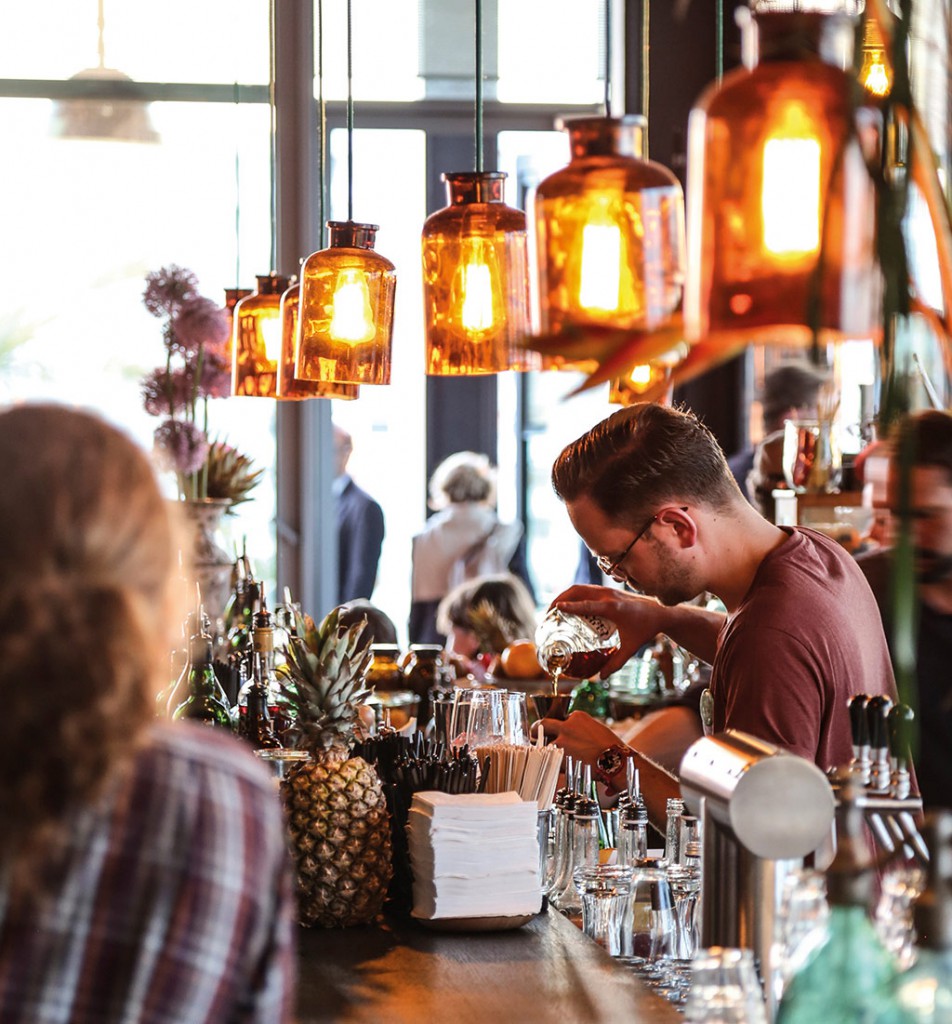
The Monkey Bar on the top floor of the 25 Hours Bikini hotel has a rooftop terrace and panoramic views of the city.
Altered accents
Back then, attempting to buy a takeaway coffee in Mitte was met with ‘Kein Englisch!’ (No English!). Now it’s so cosmopolitan, German menus come only on request in certain establishments. Come to think of it, English signage dominated at the Bikini. ‘It’s like Neukölln-Treptow,’ a fellow food writer told me, ‘There you walk down some streets and there is just no German around you. Depending on which side, it’s either Turkish or English.’
Some parts of up-and-coming neighbourhood Neukölln sound like Brooklyn; others have an Australian accent. Berlin has seduced many a global hipster with her unique combination of solid German infrastructure and anything-goes attitude. But in Berlin the ultimate hipster accessory is not only a beard; it’s a baby.
And these babies need nice, clean homes. Returning to a café in Prenzlauer Berg, I watched hoodie-wearing dads push strollers and chic mums pulling their broods behind them in bicycle trailers. Behind this passing traffic, a scaffolding tower had been erected – clearly one of the last paint jobs in the neighbourhood. The first time I came to this part of the city, the locals were tattooed and the buildings covered in graffiti. Now everyone and everything had cleaned up.
One remaining stencil caught my eye though: ‘Yuppisierung ist apartheid’, it said in angry protest against the gentrification sweeping across old Eastern suburbs. It was also a sharp reminder of home.
Wall overhaul
My last search for remnants of the wall had involved cycling off the tourist map to find the East Side Gallery and following the double row of cobble stones (and sometimes bricks) tracing the line of where it once stood. I pedalled past abandoned tracts of overgrown land and nearly missed the small sign denoting where East German soldier Conrad Schumann had defected in grand style, leaping over the razor wire.
Now the East Side Gallery is bordered by large, shiny corporate headquarters and the open land has been snapped up for housing developments. The city has invested in a comprehensive open-air Berlin Wall Memorial with interactive video and audio. At the push of a button you can hear personal stories of escape while standing on the foundations where it happened. The image of Schumann’s dash for freedom is now emblazoned on a building in Bernauer Strasse.
The memorial continues down into the Nordbahnhof S-Bahn station, once a boarded-up ghost station where the train never stopped. Now a rush of purposeful Berliners is expelled at regular intervals and every day they face what happened here. This is a museum that’s literally and figuratively out in the open: there is freedom of movement and the sombre silence of the memorial mingles with the sounds of the city. It is the physical resolution of past and present.
Getting there
If you’re already travelling in or to other parts of Germany, a rail pass could work out as the most cost effective connection to Berlin. These train-travel packages are eligible only for non-Germans, so order far enough in advance to allow for postage. Deutsche Bahn’s website is excellent as a user experience. Or for local assistance contact Rail Europe, Tel 011 628 2319, [email protected]
Also see: six great reasons to travel Germany by train
When to visit
May or September (to enjoy the parks and beer gardens), and December for the Christmas markets and Silvester (New Year’s Eve) fireworks. Avoid July and August – this city isn’t designed to cope with heat waves. Three big events draw crowds to Berlin: the Berlin International Film Festival in February, the Berlin Biennale every second year (next on in 2016) and the Berlin Marathon in late September.
Need to know
Shops open around 10am on weekdays and more like 11am or noon on weekends. If your accommodation is in the old East, trams are your friend.
Things to do in Berlin
Go to these free memorials:
- The Berlin Wall Memorial, the
- Topography of Terror and the
- Holocaust Memorial are worth a visit.
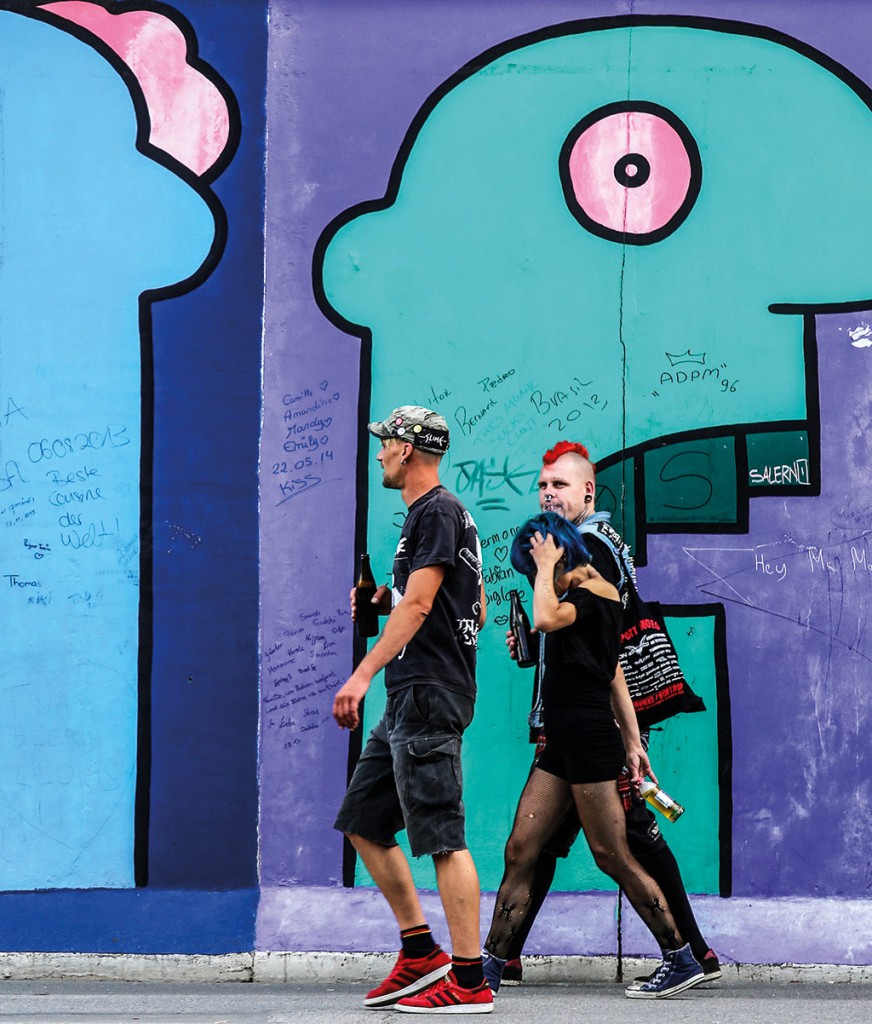
Punks walk past Heads, by artist thierry noir, at the East Side Gallery.
Getting around
Berlin is a cycling city, but between the U-Bahn and S-Bahn (the underground/overground system), trams and buses, the public transport grid is easy to navigate. The Berlin Welcome Card covers travel on all modes of public transport from the day of purchase for the period selected (48 hours, 72 hours, five days). I used a five day Berlin Welcome Card, which for €32.50 (R452) included a city map and guide, transport ticket and booklet of discount coupons for museums, attractions and restaurants. As a comparison, a seven-day straight transport ticket, including S-Bahn, U-Bahn and buses for zones AB, cost €28.80 (R400).
Download the free FahrInfo Plus app from the BVG website for route planning.
Accommodation in Berlin
1. 25Hours Hotel Bikini Berlin
25Hours Hotel Bikini Berlin is all about 360°views. The Jungle rooms overlook the Zoologische Garten (the zoo), with its swinging orangutans and treetop canopy. The sounds here are more game reserve than capital city. The Urban rooms take in the Kaiser-Wilhelm-Gedächtniskirche (memorial church). Wi-Fi is free, as is the use of Minis and bicycles but get in early. From €115 (R1599) per room per night. Breakfast is €18 (R250) per person.
2. Ackselhaus
Ackselhaus provides calming luxury in Prenzlauer Berg, from €110 per night for the Blue Room Single (sleeps two).
3. Schoenhouse Apartments
Schoenhouse Apartments are clean, neat, central and affordable, with rentals starting from €84 (R1167) per apartment per night (sleeps two).
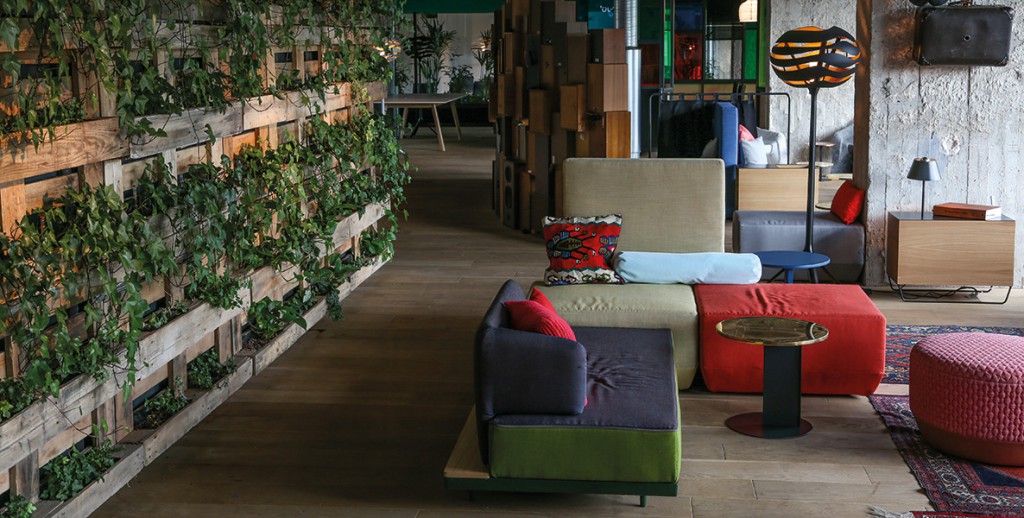
One of the communal areas at the 25Hours Bikini hotel includes an area for playing vinyl, partitioned off by a
wall of vintage speakers.
Where to eat in Berlin
Konnopke’s Imbiss is known for its currywurst. La Soupe Populaire showcases Tim Raue’s twist on traditional dishes. Pauly Saal serves up Michael Höpfl’s seasonally influenced creations.
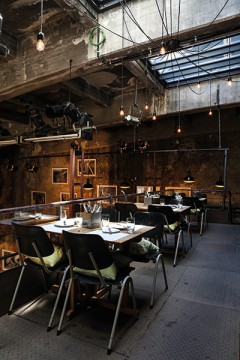
Décor at la Soupe Populaire and the Bikini hotel is typical of the old east revival: exposed concrete, grafitti and mismatched fleamarket finds.
This article first appeared in the December 2014 issue of Getaway magazine. All prices were correct at time of publication, but are subject to change at the establishments’ discretion. Please confirm with them before travelling.









